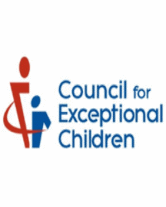Step 5: Identify the Features of the Materials That Need to Be Adapted
The design of materials can create several types of problems for students with disabilities. Many of these problems, some possible short-term adaptation solutions, and some long-term instructional goals associated with the problems are listed in Table 1, below. Teachers can use this table to help identify features of curricular units and expectations that might be causing a learning problem.
Table 1
Design Problems in Curriculum Materials and Possible Solutions
Design Problem | Short-Term Design Adaptation | Long-Term Design Adaptation |
| 1. Abstractness The content appears too conceptual, hypothetical, and impractical. | Provide students withmore concrete examples,analogies, interpretations,or experiences. | Teach students how toseek more examples,explanations, and interpretations through questioning and research. |
| 2. Organization The organization is not clear or is poorly structured. | Make the organizationexplicit for students by creating graphic organizersand reading guides andinserting cues that focusattention. | Teach students how to survey materials and identifytext organization, read toconfirm organization ofideas, and reorganizeinformation for personalunderstanding and use. |
| 3. Relevance The information does not appear to have any relationship to students or their lives. | Make the connectionsbetween the informationand students' lives explicitby building rationales andtying information to student experiences. | Teach students to askappropriate questionsabout relevance, search forpersonal connections, andexplore ways to make content relevant when given material that appears irrelevant to their lives. |
| 4. Interest The information or presentation ofthe information is boring. | Present information andassignments in ways thatbuild on students' attention span, participation, strengths, and interests. | Teach students self-management strategies for controlling attention in boringsituations, and how to takeadvantage of options andchoices provided in assignments to make work moreinteresting. |
| 5. Skills The informationis written at a level thatassumes and requiresskills beyond thosepossessed by students. | Present information inways that use the skillsstudents have. | Provide intensive instruction in basic skills requiredfor basic literacy to middle-school students whoare unprepared for secondary school content. |
| 6. Strategies The information is presented inways that assume thatstudents know how toapproach tasks effectively and efficiently instrategic ways. | Provide instruction inlearning strategies to students who do not know how to approach and complete tasks. | Cue and guide students inhow to approach and complete learning and performance tasks by leadingthem through complextasks. |
| 7. Background Understanding informationusually requires criticalbackground knowledge, but studentsoften lack the experiences and concepts (or cannot make connections to personal background experiences) tomake new informationmeaningful. | Present information inways that provide background experiences ormake background linkagesclear. | Teach students how tobecome consumers ofinformation from a varietyof information sources andhow to ask questions ofthese sources to gain background knowledge andinsights. |
| 8. Complexity The information or associatedtasks have many partsor layers. | Break down the information or tasks and presentthem explicitly and in different ways so that students can learn and perform. | Teach students how to"chunk" tasks, representcomplex informationgraphically, ask clarifyingquestions, and work collaboratively in teams toattack complex tasks. |
| 9. Quantity There is a lotof difficult or complexinformation that is crucial to remember. | Present the information inways that facilitate remembering. | Teach strategies for chunking, organizing, andremembering information. |
| 10. Activities The instructional activities andsequences provided donot lead to understanding or mastery. | Provide students with scaffolded learning experiences that include additional or alternativeinstructional activities,activity sequences, or practice experiences to ensuremastery at each level oflearning before instructioncontinues. | Teach students to independently check and redowork, review information,seek help, ask clarifyingquestions, and inform others when they need moreor different types ofinstruction before instruction in more contentbegins. |
| 11. Outcomes The information does not cue students how to thinkabout or study information to meet intended outcomes. | Inform students aboutexpectations for their learning and performance. | Teach students how to identify expectations and goalsembedded in materials or tocreate and adjust goalsbased on previous experiences with similar materials. |
| 12. Responses The materialdoes not provideoptions for students todemonstrate competence in different ways. | Provide opportunities tostudents to demonstratewhat they know in different ways. | Teach students how theycan best demonstrate competence, identify and takeadvantage of performanceoptions and choices whenthey are offered, andrequest appropriate adaptations of tests and competency evaluations. |
More on Adapting L.A., S.S., and Science Materials for the Inclusive Classroom.







